

In Hong Kong, many traditional villages can still be found. Of the 707 registered villages across the New Territories and islands, at least 100 are ghost communities, deserted by the clan, often overgrown and disappearing under vegetation. The 600 surviving villages are working hard to keep alive their heritage and communal traditions.

|
Normally, traditional Chinese villages have an ancestor hall or clan hall to
worship and pay respect to ancestors. Lineage rituals and banquets are held in
full view of the ancestor tablets.
|
| Fung Yuen ancestor hall |
|---|
During the past 50 years, villages have changed. Many of the remote settlements, such as Cheung Uk, Lei Uk and Lo Wai in Sha Lo Tung area, have died. They have been abandoned by their occupants, who fled to urban area leaving behing them an agricultural life.
|
Inside, indigenous villagers bow to show respect to their ancestors.
The memorial soul tablets of the generations of ancestors fills the
entire altar. The soul tablets are inscribed with details of the deceased and adorned
at the top with small triangular cones made of gold paper.
|

|
| Fung Yuen ancestor hall altar |
|---|
In the 1950s, the economic impact of the Korean war and trade blockades of China led to poverty in rural areas. Thousands men went to sea as merchant mariners or migrated to work in Britain where they worked in Chinese takeaway restaurants, later opening their own establishments. The men of many villages were forced to seek work far from their paddy fields.

|
The ancestor hall also acts as a council chamber for clan elders. The
elders mediate in all kinds of disputes and solve problems.
|
| Inside Fung Yuen ancestor hall |
|---|
The spring and Automn rites are held in the hall. Marriages and births of sons are celebrated in the hall. When clan males become elders at the age of 61, they make special offering at the altar. The hall is at the very center of the religious life of those who belong to it.
|
Small old village houses are very picturesque with their black-tiled roofs.
Their locations were picked to be in harmony with nature and following
the rules of "feng shui". The homes were tiny and uncomfortable.
They had no running water, electricity or indoor toilets.
|

|
| Fung Yuen old houses |
|---|
The old village houses have mostly disappeared as the three-story houses with their 700 square feet of floor area have been built by the thousands.

|
Each temple is dedicated to a main god whose statue stands in the central hall
facing the doors.
|
| Chinese temple |
|---|
For local clans, the founder's grave is a symbol of unity. Those graves are often famous for its "feng shui". In the New Territories, the souls of dead people are divided into three parts, one part is found in the grave, one in the ancestral tablet, one part in the underworld.
|
The most highly prized sites for ancestral graves are located on south-facing hillsides
overlooking water. The gravestone give details of the relationships of the family members.
|

|
| Horseshoe-shaped grave |
|---|
Ancestors are expected to confer upon their descendants: wealth, political power, progeny.
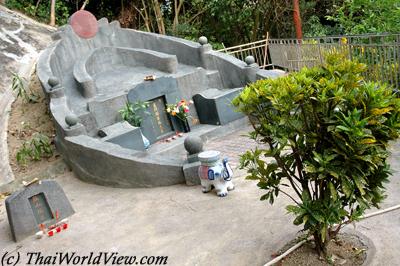
|
In 1990s, villagers believed removing a 200-year-old graveyard in Nim Wan, a deep coastal bay,
would destroy "feng shui" and endanger their lives.
They said that the government decision violated the treaty signed by the Chinese
and British governments in 1899, which stated that graves on this rented-land
of Hong Kong should never be moved.
|
| Horseshoe-shaped grave |
|---|
Many native lush forests are preserved on slopes behind villages. They were planted behind villages, usually up the hillside as villages are supposed to have hillside behind and water in front in order to have a good "feng shui" or fortune. There are called "feng shui" woods and are a common rural feature of Southern China. Many villagers show discontent when non-villagers move in and start cutting down the trees, which have brought the village good fortune for anywhere up to 300 years.
|
The earth gods are territorial because they are thought of as spirits of the locality
in which their shrine is situated.
|

|
| Earth god shrine |
|---|
To one side of the shrine there may be a stone or brick fireplace in which paper money and other paper offerings are burned.

|
Some villages can contain several shrines, i.e. one in the main temple as governor of the
village and earth god shrines located in each of the four directions as general security guards.
|
| Earth god shrine |
|---|
|
Following the economic fall of some villages or clans, some Ancestor Halls
are used as shops and factories, which can cause serious damage to the
building.
|

|
| Ancestor hall |
|---|
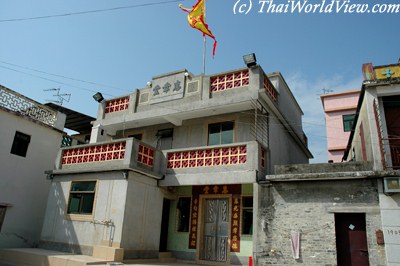
|
Some villages are single-lineage villages.
Famous surname clan lineages are Liu, Man (San Tin), Teng, Lai, Tang, Pang, Hou.
The lineages maintained their own militia for protection against bandits and rival lineages.
|
| Sha Kong Wai village house |
|---|
There are five clans, which once dominated the New Territories, i.e. the Tangs, Man, Hau, Pang and Liu clans.
|
Lineages owned much of the agricultural land in the region and controlled
some of the most lucrative aspects of market town commerce.
Functioning lineages can still be found in the rural area of Hong Kong in New Territories.
Larger lineages are invariably divided into rival segments that compete for
local power and wealth.
|
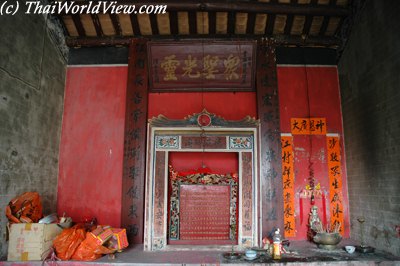
|
| Sha Kong Wai village temple |
|---|
Click to see more pictures |
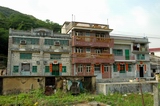
|
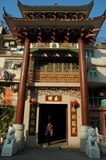
|
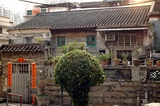
|
| Home > Society > Villages |
| Page 1 | Page 2 | Page 3 |
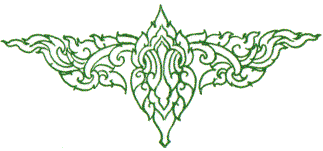
|